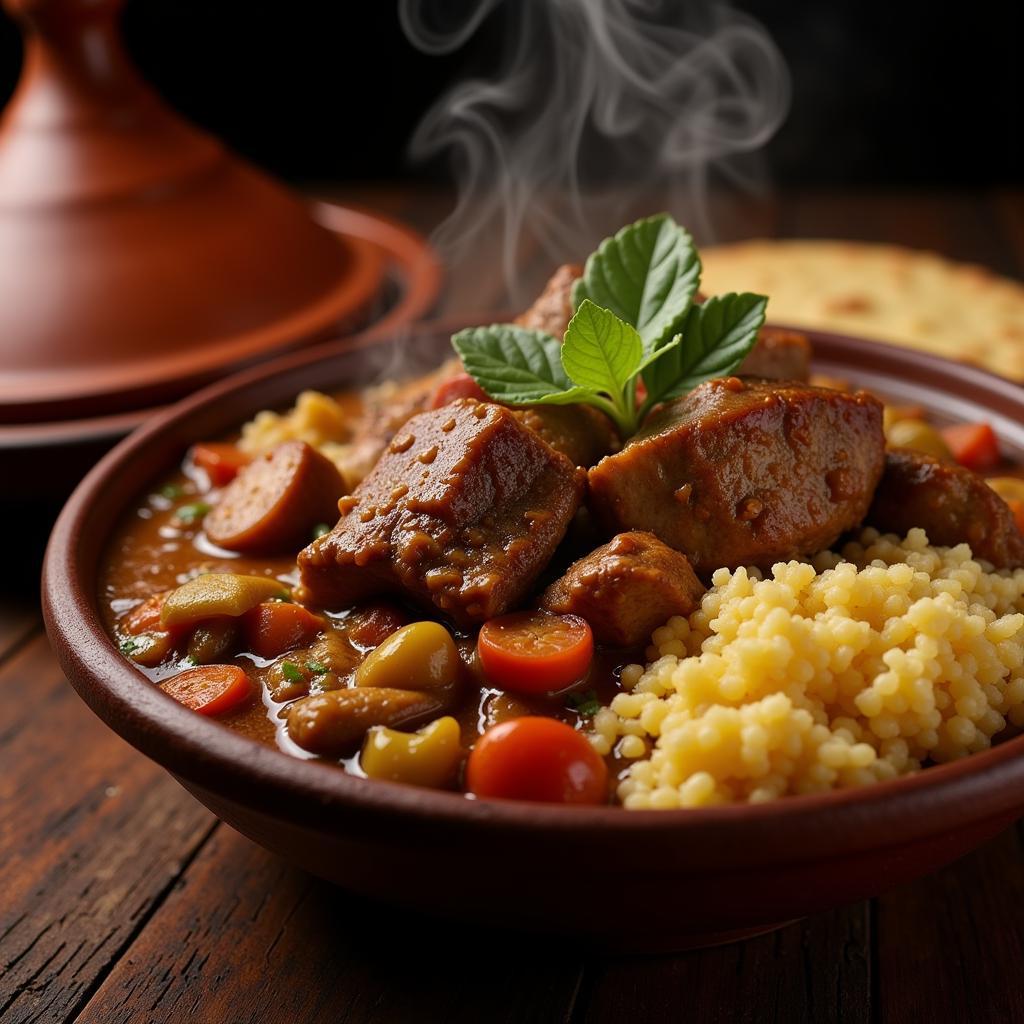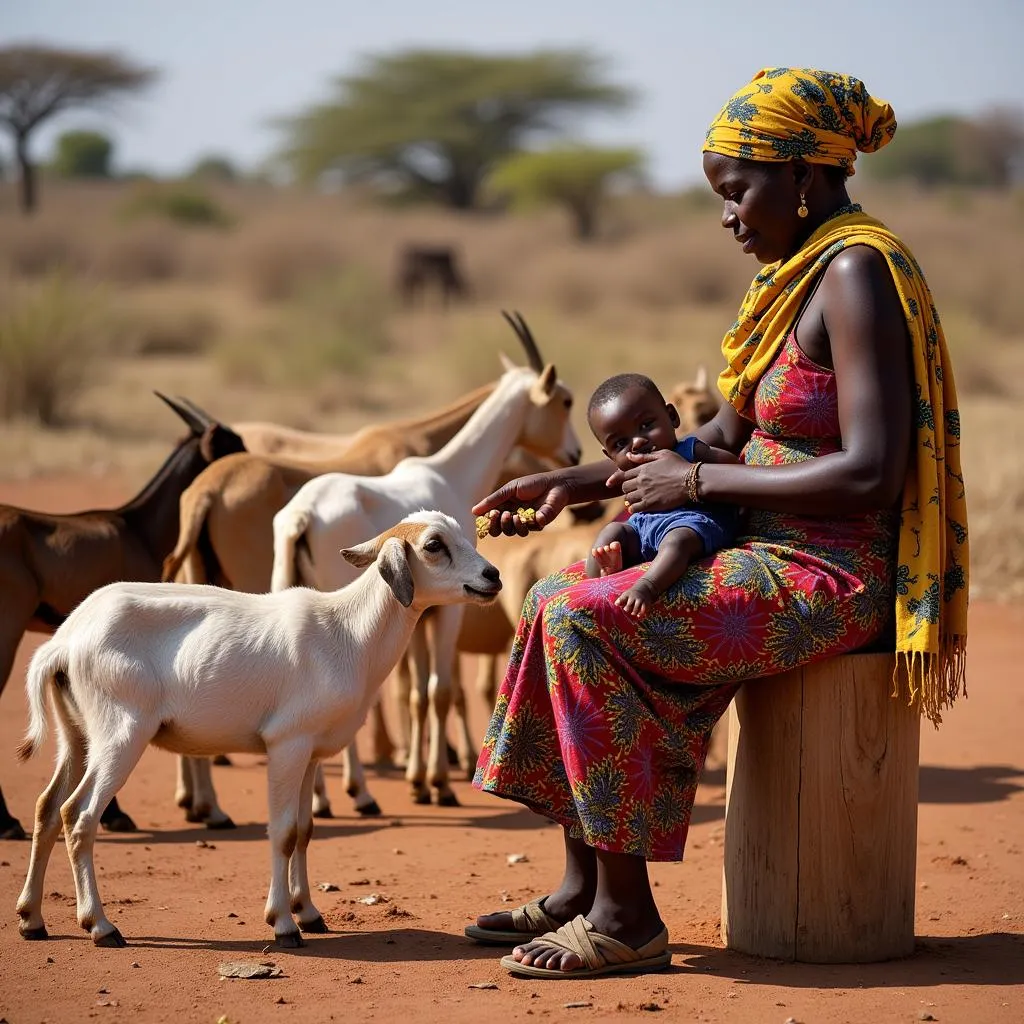Exploring the Diverse World of African Food Com
African Food Com is a gateway to a continent brimming with culinary diversity, reflecting a tapestry of cultures, traditions, and ingredients. From the fragrant tagines of Morocco to the spicy jollof rice of West Africa, African cuisine is a celebration of flavor and heritage. This article delves into the fascinating world of African food, exploring its history, regional variations, and the key ingredients that make it so unique.
A Continent of Culinary Treasures: Unveiling Regional Variations
African food is not a monolith; it’s a vibrant mosaic of flavors that vary significantly across regions. Each region boasts its own unique culinary traditions, influenced by climate, geography, and cultural practices.
North Africa: A Fusion of Mediterranean and Arabic Influences
North African cuisine, encompassing countries like Morocco, Algeria, and Tunisia, is characterized by its bold flavors and aromatic spices. The region’s proximity to the Mediterranean Sea and historical ties to the Middle East have resulted in a unique culinary fusion.
 Moroccan Tagine with Couscous
Moroccan Tagine with Couscous
Think fragrant tagines, slow-cooked stews infused with spices like cumin, coriander, and saffron, often accompanied by fluffy couscous. Don’t forget the delectable pastries, like baklava and chebakia, that add a touch of sweetness to the North African culinary experience.
West Africa: A Celebration of Bold Flavors and Hearty Stews
West African cuisine is renowned for its bold flavors, vibrant colors, and hearty stews. This region is home to iconic dishes like jollof rice, a flavorful rice dish cooked in a tomato-based sauce, and fufu, a starchy side dish often served with soups and stews.
Peanuts, palm oil, and chili peppers are staples in West African cooking, adding depth and complexity to dishes.
East Africa: A Blend of Swahili, Indian, and Arabic Influences
East African cuisine reflects the region’s rich history as a trading hub. Swahili, Indian, and Arabic influences have shaped its culinary landscape, resulting in a diverse range of dishes. Ugali, a stiff porridge made from maize flour, is a staple food, often served with stews and vegetables.
african food style soups and steues images
Coastal areas offer a bounty of seafood, often prepared with coconut milk and aromatic spices.
Southern Africa: A Melting Pot of Indigenous and Colonial Flavors
Southern African cuisine is a fusion of indigenous Bantu cooking traditions and influences from European settlers. Meat, particularly game meat, features prominently in the region’s cuisine, often grilled or cooked in stews known as “potjies.” Corn-based dishes, such as pap (a type of porridge) and bogobe (a thick porridge), are also common.
 South African Braai with Grilled Meats
South African Braai with Grilled Meats
Key Ingredients: The Essence of African Flavors
Certain ingredients are central to African cuisine, shaping its unique flavor profiles and culinary identity.
-
Grains: From rice and maize to millet and sorghum, grains form the foundation of many African dishes. They’re often ground into flour to make porridges, breads, and dumplings.
-
Legumes: Lentils, beans, and peanuts are nutritional powerhouses that feature prominently in African cooking. They add texture, protein, and depth of flavor to stews, soups, and sauces.
-
Spices: African cuisine is renowned for its bold use of spices. From the warmth of ginger and turmeric to the earthy flavors of cumin and coriander, spices infuse African dishes with depth and complexity.
-
Palm Oil: Palm oil is a key ingredient in West African cooking, adding a rich, reddish hue and distinctive flavor to stews and sauces.
african food recipes jollof rice
“African food is about celebrating the bounty of the land and the ingenuity of its people,” shares Chef Abena, a renowned Ghanaian chef. “It’s about using simple ingredients to create dishes that are both delicious and nourishing.”
Conclusion: A Culinary Journey Awaits
African food com offers a glimpse into the culinary soul of a diverse and vibrant continent. From the fragrant tagines of Morocco to the spicy jollof rice of West Africa, African cuisine is a testament to the power of food to connect us to culture, history, and tradition. So, embark on a culinary adventure and explore the diverse flavors of Africa—you won’t be disappointed.
FAQ: Delving Deeper into African Cuisine
1. What is the most popular food in Africa?
It’s difficult to pinpoint one “most popular” food as culinary traditions vary greatly. However, some widely enjoyed dishes include jollof rice, fufu, and various stews.
2. What makes African food unique?
African food is unique for its diverse flavors, influenced by a blend of indigenous ingredients, cultural exchanges, and regional variations.
3. Is all African food spicy?
While many African dishes incorporate chili peppers, not all African food is spicy. Flavor profiles vary widely across regions and dishes.
4. What are some common cooking methods used in African cuisine?
Common cooking methods include stewing, grilling, roasting, frying, and steaming.
5. Where can I find authentic African recipes?
Online resources, cookbooks, and local African restaurants are great places to find authentic African recipes.
Need help exploring the world of African food com? Contact us! Our dedicated team is available 24/7 to assist you. Reach out via phone at +255768904061, email us at kaka.mag@gmail.com, or visit us in person at Mbarali DC Mawindi, Kangaga, Tanzania. Let us help you discover the diverse and delicious world of African cuisine!



